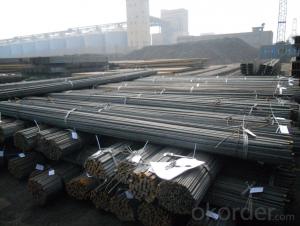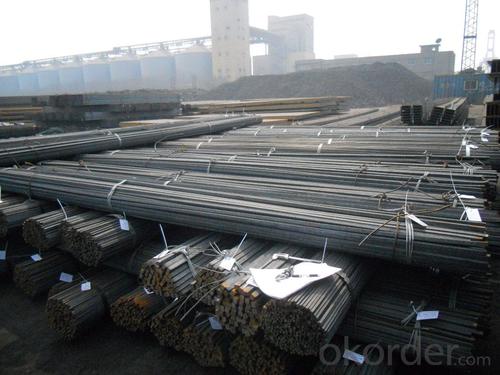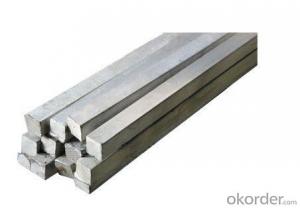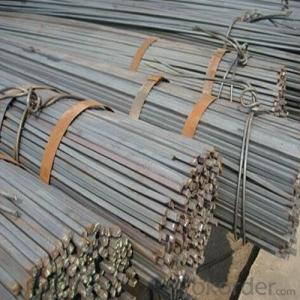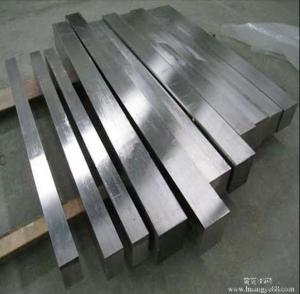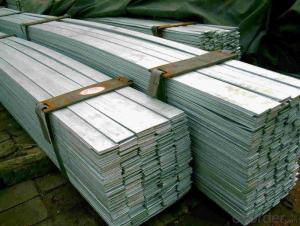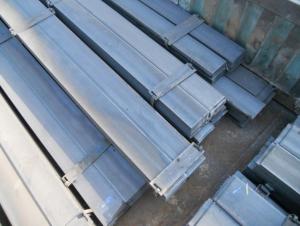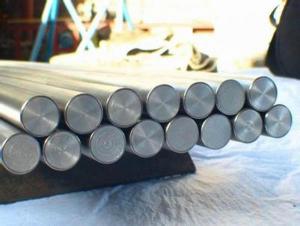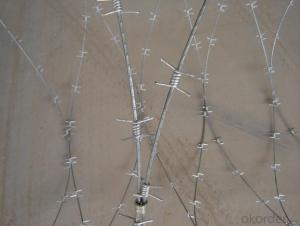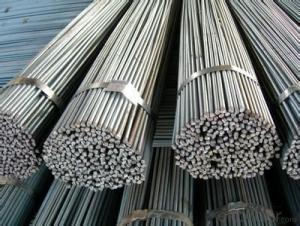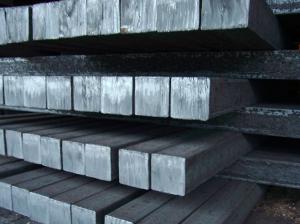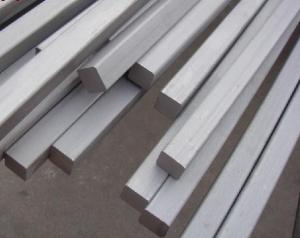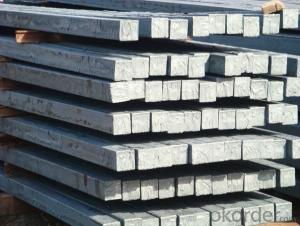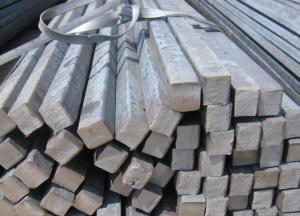Steel Square Bar with High Quality
- Loading Port:
- China Main Port
- Payment Terms:
- TT or LC
- Min Order Qty:
- -
- Supply Capability:
- -
OKorder Service Pledge
OKorder Financial Service
You Might Also Like
OKorder is offering Steel Square Bar with High Quality at great prices with worldwide shipping. Our supplier is a world-class manufacturer of steel, with our products utilized the world over. OKorder annually supplies products to European, North American and Asian markets. We provide quotations within 24 hours of receiving an inquiry and guarantee competitive prices.
The allowed tolerance of Square Steel:
Length of a side(mm) | Allowed Tolerance | ||
Group1 | Group2 | Group3 | |
5.5~7 | ±0.20 | ±0.30 | ±0.40 |
7~20 | ±0.25 | ±0.35 | ±0.40 |
20~30 | ±0.30 | ±0.40 | ±0.50 |
30~50 | ±0.40 | ±0.50 | ±0.60 |
60~80 | ±0.60 | ±0.70 | ±0.80 |
80~110 | ±0.90 | ±1.0 | ±1.1 |
110~150 | ±1.2 | ±1.3 | ±1.1 |
150~190 | ―― | ―― | ±2.0 |
190~250 | ―― | ―― | ±2.5 |
Chemical Composition:
Standard | Grade | Element (%) | ||||
GB | Q195 | C | Mn | S | P | Si |
≤0.12 | ≤0.50 | ≤0.04 | ≤0.035 | ≤0.3 | ||
-Method of deoxidation: F, b, Z
Packaging & Delivery of Square Steel:
-Packing Detail: The products can be packed in bundles by steel wires.
-Delivery Detail: 30~45 working days after receive buyer’s T.T. or L/C.
Transportation & Marking:
-Transportation:
1, The products can be delivered by bulk vessel or by container.
2, The maximum quantity of loading of container is 25 tons.
3, The products usually are transported to the nearest port from the production place.
-Marks:
1, Color mark: there will be color marking on both ends of the bundles for the cargo delivered by bulk vessel. That makes is easily to distinguish at the destination port.
2, Tag mark: the tag marks will be tied up to each bundle. The information is usually including supplier’s logo and name, product name, made in China, products’ specifications and other information requested by customers.
Product Applications:
Steel Square Bar with High Quality are ideal for structural applications and are widely used in the construction of buildings and bridges, and the manufacturing, petrochemical, and transportation industries.
Product Advantages:
OKorder's Steel Square Bar with High Quality Bar are durable, strong, and resist corrosion.
Main Product Features:
· Premium quality
· Prompt delivery & seaworthy packing (30 days after receiving deposit)
· Corrosion resistance
· Can be recycled and reused
· Mill test certification
· Professional Service
· Competitive pricing
Product Specifications:
Standard: GB
Material: Q235
Origin place: China
Thickness: 3mm-30mm
Width:20mm-200mm
Length: Max 12m
FAQ:
Q1: Why buy Materials & Equipment from OKorder.com?
A1: All products offered byOKorder.com are carefully selected from China's most reliable manufacturing enterprises. Through its ISO certifications, OKorder.com adheres to the highest standards and a commitment to supply chain safety and customer satisfaction.
Q2: How do we guarantee the quality of our products?
A2: We have established an advanced quality management system which conducts strict quality tests at every step, from raw materials to the final product. At the same time, we provide extensive follow-up service assurances as required.
Q3: What makes stainless steel stainless?
A3: Stainless steel must contain at least 10.5 % chromium. It is this element that reacts with the oxygen in the air to form a complex chrome-oxide surface layer that is invisible but strong enough to prevent further oxygen from "staining" (rusting) the surface. Higher levels of chromium and the addition of other alloying elements such as nickel and molybdenum enhance this surface layer and improve the corrosion resistance of the stainless material.
Images:
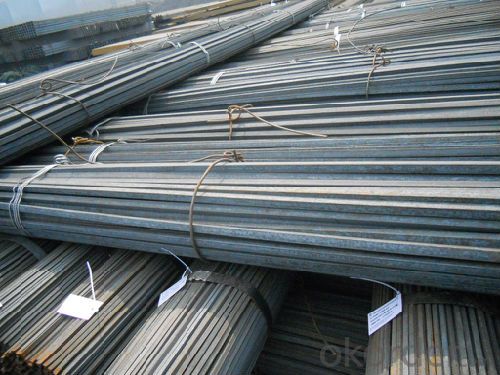
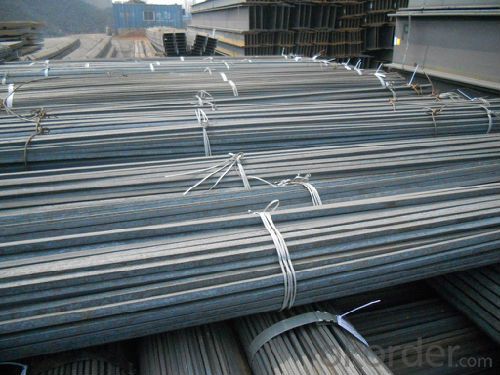
- Q: What are the common applications of a steel square in woodworking?
- A steel square is a versatile tool commonly used in woodworking for various applications such as checking and marking right angles, measuring and transferring dimensions, determining squareness and straightness, as well as aligning and squaring up joinery and assemblies.
- Q: How do you use a steel square to determine the angle of a drum sanding cut?
- To use a steel square to determine the angle of a drum sanding cut, you will need to follow these steps: 1. Start by setting up the steel square on a flat surface, ensuring that it is perpendicular to the edge of the table or workbench. 2. Place the drum sander on the table, aligning it with the edge of the steel square. 3. Adjust the angle of the drum sander by rotating it until it is parallel to one of the edges of the steel square. 4. Once the drum sander is aligned parallel to the edge of the steel square, measure the angle between the steel square and the drum sander using a protractor or an angle measuring tool. 5. Take note of the angle measurement, as this will be the angle at which you need to set your drum sander for the desired cut. 6. Use the angle measurement to adjust the drum sander accordingly, either by adjusting the table tilt or by using any angle adjustment features available on your specific drum sander model. 7. Double-check the angle by placing the steel square back on the table and aligning it with the drum sander. Ensure that the drum sander is parallel to the edge of the steel square. 8. Once you are confident that the drum sander is set at the desired angle, you can proceed with making your drum sanding cut. It is important to note that using a steel square to determine the angle of a drum sanding cut provides a rough estimate and may not be as accurate as using specialized angle measuring tools. However, it can still be a useful technique for achieving reasonably accurate results in many woodworking tasks.
- Q: Can a steel square be used for roofing projects?
- Yes, a steel square can be used for roofing projects. It is a versatile tool that can help measure and mark angles, make straight cuts, and create precise lines for roofing materials.
- Q: Are there any special techniques for using a steel square in masonry work?
- Yes, there are special techniques for using a steel square in masonry work. One common technique is using the square to ensure precise right angles when laying bricks or blocks. By aligning the square with the edges of the bricks, masons can quickly determine if the corners are perfectly square. This helps in creating a strong and visually appealing structure. Additionally, the steel square can be used to measure and mark angles for cutting bricks or blocks at specific angles, allowing for more intricate masonry work.
- Q: How do you use a steel square to measure and mark irregular angles?
- To use a steel square to measure and mark irregular angles, you can align one side of the square with a known straight reference line, such as the edge of a board. Then, rotate the square until one of its edges aligns with the irregular angle you want to measure. Next, lock the square in place and transfer the angle by marking along the edge of the square onto your workpiece. This method helps ensure accurate measurements and precise markings for irregular angles.
- Q: How do you determine if a steel square is square?
- To determine if a steel square is square, you need to perform a simple test called the "4-5-6 method." This method involves measuring the diagonals of the square and checking if they are equal. First, place the steel square on a flat surface or workbench. Ensure that it is positioned correctly, with one edge against a straight edge or wall to prevent any movement. Next, measure one side of the square, marking it as "4 units." Then, measure another side perpendicular to the first, marking it as "5 units." Now, measure the diagonal from the starting point of the 4-unit side to the endpoint of the 5-unit side. If the square is perfectly square, this diagonal should measure exactly 6 units. Repeat this process for the other diagonal by measuring the diagonal from the starting point of the 5-unit side to the endpoint of the 4-unit side. Again, this diagonal should also measure exactly 6 units. If both diagonals measure exactly 6 units, then the steel square is square. However, if the measurements differ, even slightly, it indicates that the square is not perfectly square. In such cases, it is advisable to check the square against a known accurate reference, such as another steel square or a reliable measuring tool, to confirm its squareness.
- Q: Can a steel square be used for measuring board thickness?
- No, a steel square cannot be used for measuring board thickness. Steel squares are primarily used for measuring and marking angles, not for measuring thickness. To measure board thickness accurately, you would need a tool specifically designed for that purpose, such as a caliper or a thickness gauge. These tools provide precise measurements in millimeters or inches, ensuring accuracy in determining the thickness of the board.
- Q: Can a steel square be used for measuring angles in masonry work?
- Yes, a steel square can be used for measuring angles in masonry work. A steel square, also known as a framing square or carpenter's square, is a versatile tool that can be used for a variety of measurements and layout tasks. While it is primarily used in woodworking, it can also be used in masonry work to measure angles and ensure accurate cuts and layouts. The square's right angle and various markings can be used to determine and transfer angles, making it a useful tool in masonry projects. However, it is important to note that for more precise or specific angles, specialized tools like a protractor or angle finder may be required.
- Q: Can a steel square be used for metalworking tasks?
- A steel square has multiple applications in metalworking. Engineer's squares or machinist's squares, also referred to as steel squares, are precision tools extensively used in metalworking. These tools are typically made from hardened steel and possess precise right angles, which make them perfect for verifying and marking 90-degree angles in metal fabrication, welding, and machining procedures. Steel squares are frequently employed to ensure accuracy and alignment of metal components during layout, layout marking, scribing, and measuring tasks. Moreover, they can be utilized to examine the flatness and straightness of metal surfaces, as well as to square up workpieces during cutting or milling. Overall, steel squares are essential tools in the field of metalworking, providing valuable assistance in achieving precision and quality in a variety of metal-related tasks.
- Q: Can a steel square be used for marking out finger joints?
- Yes, a steel square can be used for marking out finger joints. A steel square is a versatile and precise tool commonly used in woodworking and carpentry. It has a 90-degree angle and a ruler along its edge, making it perfect for marking out straight lines and angles. When making finger joints, accuracy is crucial to ensure a proper fit. A steel square can be used to mark the lines and angles needed to create the joints, allowing for precise and clean cuts. However, it is important to note that finger joints require precise measurements and layout, so it is recommended to use a dedicated finger joint jig or a dado blade on a table saw for the best results.
Send your message to us
Steel Square Bar with High Quality
- Loading Port:
- China Main Port
- Payment Terms:
- TT or LC
- Min Order Qty:
- -
- Supply Capability:
- -
OKorder Service Pledge
OKorder Financial Service
Similar products
Hot products
Hot Searches
Related keywords
